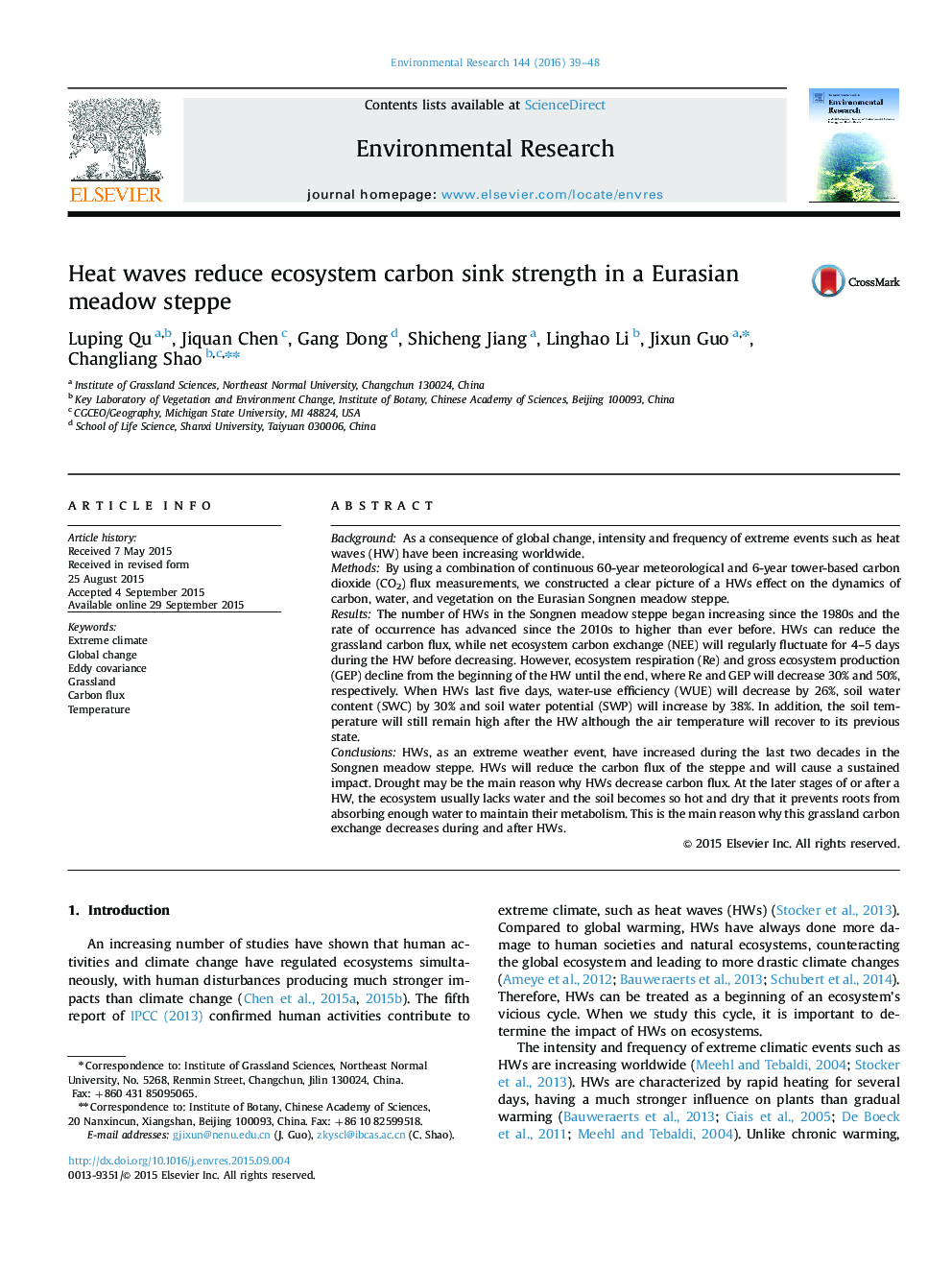| کد مقاله | کد نشریه | سال انتشار | مقاله انگلیسی | نسخه تمام متن |
|---|---|---|---|---|
| 4469643 | 1314290 | 2016 | 10 صفحه PDF | دانلود رایگان |
• We using a combination of continuous 60-year meteorological and 6-year tower-based carbon dioxide (CO2) flux measurements constructed a clear picture of a HWs effect.
• HWs, as an extreme weather event, have increased during last two decades in the Songnen meadow steppe.
• HWs will reduce the carbon flux of the steppe and will cause a sustained impact.
• Drought may be the main reason why HWs decrease carbon flux.
BackgroundAs a consequence of global change, intensity and frequency of extreme events such as heat waves (HW) have been increasing worldwide.MethodsBy using a combination of continuous 60-year meteorological and 6-year tower-based carbon dioxide (CO2) flux measurements, we constructed a clear picture of a HWs effect on the dynamics of carbon, water, and vegetation on the Eurasian Songnen meadow steppe.ResultsThe number of HWs in the Songnen meadow steppe began increasing since the 1980s and the rate of occurrence has advanced since the 2010s to higher than ever before. HWs can reduce the grassland carbon flux, while net ecosystem carbon exchange (NEE) will regularly fluctuate for 4–5 days during the HW before decreasing. However, ecosystem respiration (Re) and gross ecosystem production (GEP) decline from the beginning of the HW until the end, where Re and GEP will decrease 30% and 50%, respectively. When HWs last five days, water-use efficiency (WUE) will decrease by 26%, soil water content (SWC) by 30% and soil water potential (SWP) will increase by 38%. In addition, the soil temperature will still remain high after the HW although the air temperature will recover to its previous state.ConclusionsHWs, as an extreme weather event, have increased during the last two decades in the Songnen meadow steppe. HWs will reduce the carbon flux of the steppe and will cause a sustained impact. Drought may be the main reason why HWs decrease carbon flux. At the later stages of or after a HW, the ecosystem usually lacks water and the soil becomes so hot and dry that it prevents roots from absorbing enough water to maintain their metabolism. This is the main reason why this grassland carbon exchange decreases during and after HWs.
Journal: Environmental Research - Volume 144, Part B, January 2016, Pages 39–48
